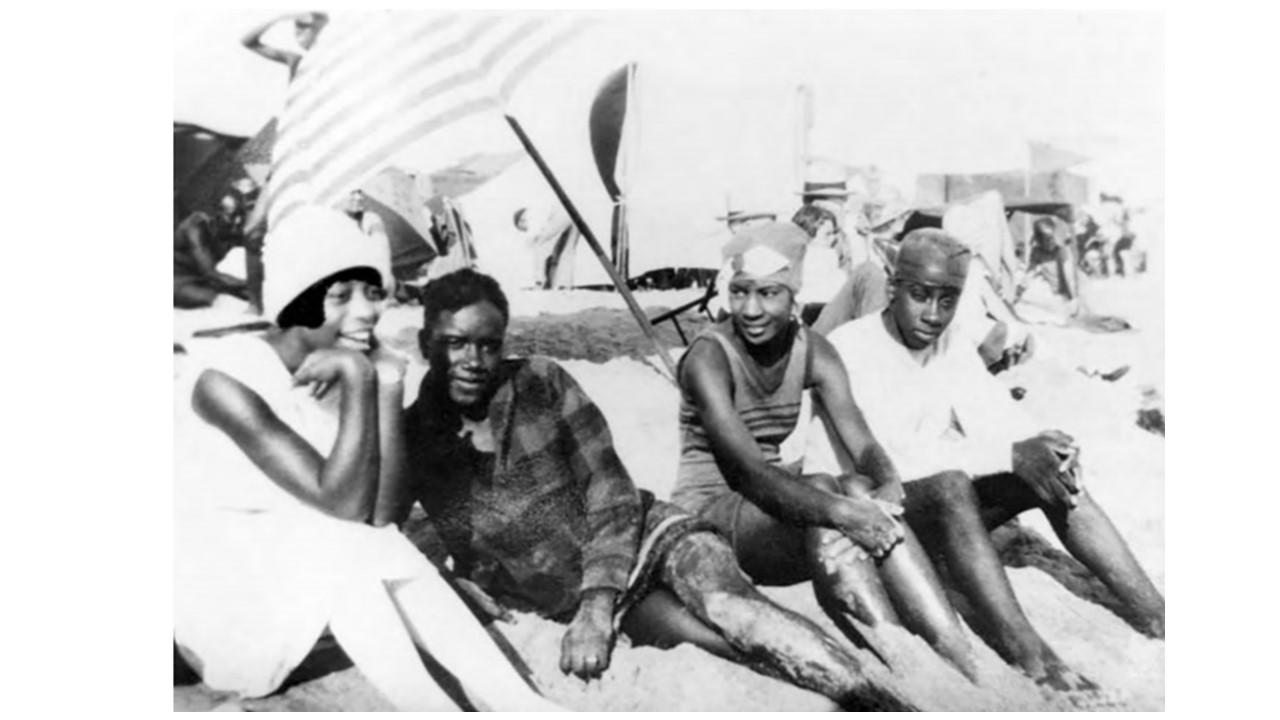
African American History in Santa Monica Gets New Curriculum
Today, the intersection of 4th St. and Pico Blvd. in Santa Monica is the site of Historic Belmar Park. A new park constructed on an important piece of land with deep African American roots calls out for learning. This is where our colleagues at the UCLA History and Geography Project come in. The City of Santa Monica and the Belmar History + Art Project recently awarded them the Cultural Resource Award for writing K-12 curriculum about the significance of Belmar Triangle. In partnership with historian Dr. Alison Rose Jefferson, teacher leaders with the UCLA History and Geography Project designed culturally responsive lessons about the local history of this important area. This history includes “the oldest African American settlement of any seaside community in the region,” displacement and oppression, and activism and resistance, according to Rose Jefferson.
Four local teachers – Sarah Rodriguez, Adrienne Karyadi, Shomara Gooden, and Christina Paul – designed lessons for students in 3rd and 4th grade social studies and California history, eighth grade early American history, Ethnic Studies, and 11th grade modern U.S. history courses. Each lesson uses an inquiry-model of instruction, includes a variety of primary sources collected and archived by Rose Jefferson, and features literacy strategies. The third grade lesson asks students to consider the question What actions did people take in order to live freely in my community? What informed actions can we take today? To answer this question, students review photographs of Philips Chapel Christian Methodist Episcopal Church, the first African American church in Santa Monica; they read biographies of people like Lloyd Allen, an African American man who migrated from Louisiana to Santa Monica as a child; and they analyze newspaper articles from the 1920s about the development and popularity of segregated “amusement centers.” The eighth grade lesson centers Santa Monica’s African American community in challenging racial discrimination and segregation at beaches and community spaces. Documentary film clips, advertisements and photographs of black-owned beach houses and beach goers, along with historical maps transposed on modern-day maps, for example, help students explore the relationship between race, space, and historical context in California. The high school lessons guide students through a local history of institutionalized racism, resistance, and historical memory that connects the past to the present in important ways.
The collaborative process of developing this curriculum is central to the core mission of the CHSSP network: Rose Jefferson worked closely with Daniel Diaz, Director of the UCLA History and Geography Project, and experienced K-12 teacher leaders. Project coordinator, Mark Anthony Moreno, formatted and prepared the lessons for the City of Santa Monica to post them. The lessons will be widely accessible in the coming weeks. This scholar-teacher-public history effort is a model for how to heighten student awareness and engagement with the complexity and importance of racial identity, power, and resistance in shaping their home state.
